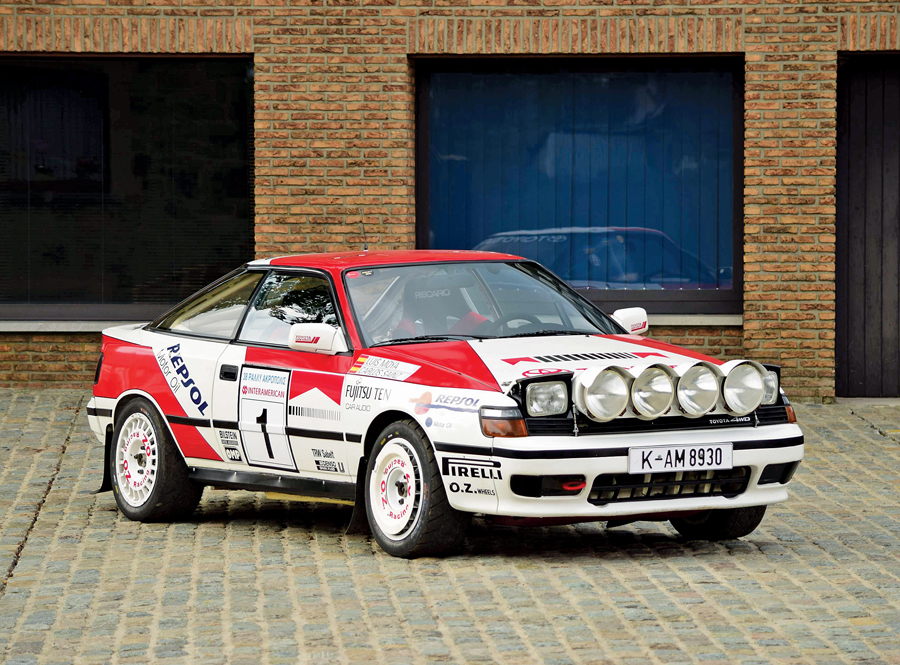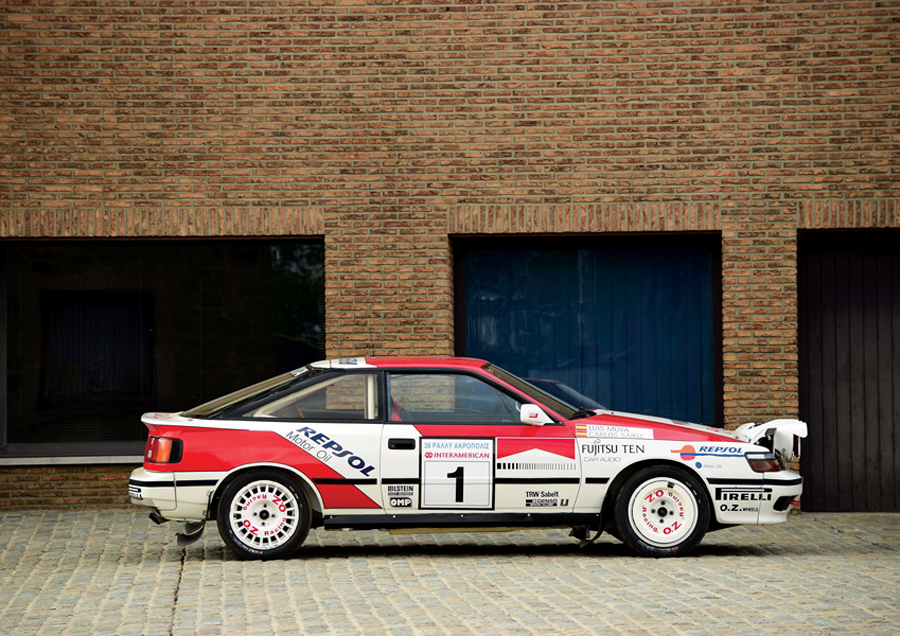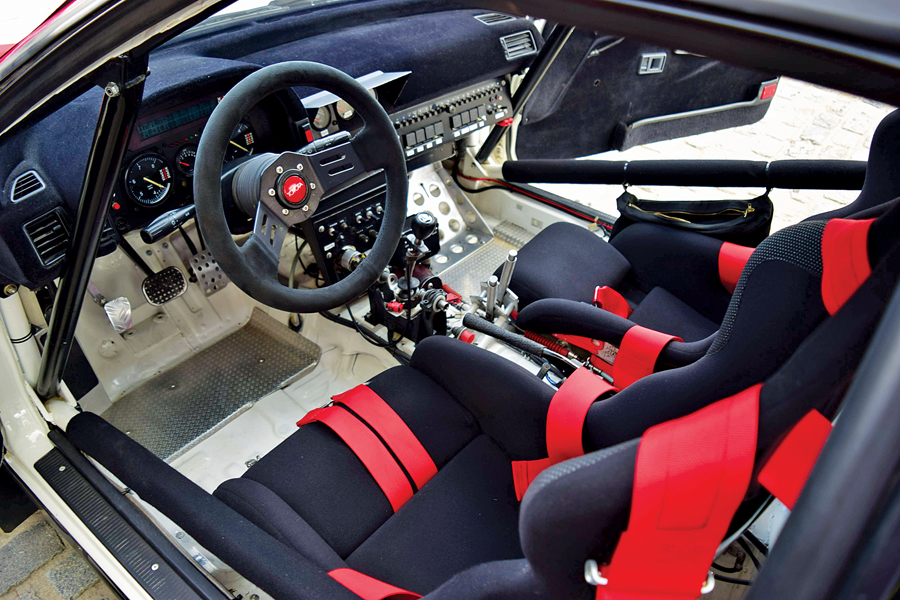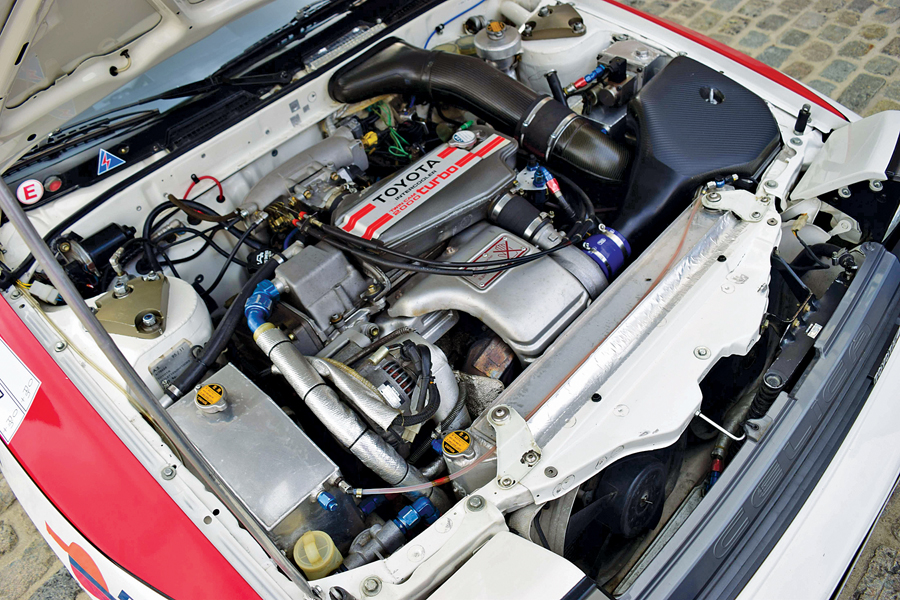- Factory car
- Driven by Carlos Sainz and Marc Duez during the 1991 season
- Restored by the former factory team
- Perfect for historic rallies
- 2nd at the 1991 Acropolis Rally with Carlos Sainz
SCM Analysis
Detailing
| Vehicle: | 1991 Toyota Celica ST165 TC 4-55 |
| Years Produced: | 1986–89 |
| Number Produced: | 9,767 |
| Original List Price: | $21,408 (U.S. retail) |
| SCM Valuation: | $195,650 (this car) |
| Chassis Number Location: | Left side dashboard under windshield |
| Engine Number Location: | On raised boss, adjacent to clutch housing |
| Website: | http://www.alltrac.net |
| Alternatives: | 1988–91 BMW 325iX, 1980–91 Audi Quattro, 1987–88 Lancia Delta Integrale 8v |
| Investment Grade: | B |
This car, Lot 91, sold for $195,650, including buyer’s premium, at Artcurial’s auction in Paris, FRA, on July 7, 2018.
One of the great things about motorsports is that adversity never fails to give birth to innovation.
After the heady days of nearly unlimited Group B rallying in the mid-1980s, the FIA banned the class. It seemed as though the glory days of rallying might be over, but competitors quickly developed the more-restricted — and safer — Group A cars until they could rival the old Group B cars. Group B still has some mystique to it, but in truth Group A cars are just as good.
The Toyota Celica ST165 has solid standing among the Group A cars that flourished during the late 1980s and early 1990s. The great Carlos Sainz rallied to two world championships for Toyota, winning his first title in 1990 while piloting the ST165. The ST165 was produced for homologation from 1986 until 1989, but it was Toyota’s rally platform through the 1991 season.
Then the updated Celica ST185 replaced it.
What is an ST165?
The Celica ST165 was sold in America as the Toyota Celica All-Trac, so-called because of its all-wheel-drive system. As is usually the case with rally cars, the street version was not much different from the competition version — except for the engine tuning, driveline and a massively reinforced chassis.
The engine in the retail ST165 is a 2.0-liter DOHC turbocharged unit, rated at about 185 to 190 horsepower and 184 ft-lb of torque. The engine is mounted transversely in keeping with the car’s basic FWD design.
In street form, the All-Trac received a 5-speed manual transaxle with a viscous coupling center differential to route power to the rear wheels. The front differential inside the transaxle was open, while the rear wheels were driven through a Torsen limited-slip differential. The basic Celica All-Trac would do 0–60 mph in about 7.7 seconds, and it could hit a top speed of 135 mph.
The same base engine was used in Group A trim, but output was boosted to about 300 horsepower and 290 ft-lb of torque. The car could be equipped with a 5-speed or 6-speed manual transmission. The center differential was set up to direct 72% of power to the rear wheels under most conditions, although that would change to a 50/50 split if the rear wheels slipped.
The ST165 used independent McPherson strut suspension on all four corners and four-wheel disc brakes, all of which were upgraded on the competition cars. The car weighed in at about 2,500 pounds when it was ready to rally.
Solid competition history
As mentioned, Carlos Sainz drove the ST165 to a World Rally championship in 1990, winning four events.
He won five rallies in ST165 cars in 1991, but he didn’t get the championship. Among the rallies Sainz didn’t win in 1991 was the Acropolis Rally, where he drove our subject car to a 2nd-place finish. That’s still plenty respectable, and that finish gives this car impeccable WRC credentials.
After its career as a Toyota factory team car ended, this ST165 went the way of many rally cars — running in secondary races through the 1990s. The car has amassed an impressive and lengthy racing history. This is good and bad for a rally car.
Few will be surprised to learn that rally is much harder on equipment than track racing. It’s not just the struts and brakes that wear out; it’s the entire car. Endless pounding can lead to metal fatigue throughout a rally car’s unibody, even when it’s been expertly reinforced through a factory build process.
For this reason, it’s always good to be cautious when buying any used rally car.
The auction description claims an exhaustive restoration, and that’s a good thing. However, more than one classic racing machine has literally fallen apart when taken out in competition by new owners. Caveat emptor, Mr. Mitty.
Fairly bought
Assuming that the car is truly in good shape and has been thoroughly checked for cracks and fatigue, this buyer paid a fair price and got a good deal. This Celica comes with documented provenance back to the Toyota factory, so it’s safe to say it is as advertised.
Other racing cars with documented podium finishes in the hands of champions have sold for comparable prices. For example, a 1996 Subaru WRX with competition history in the hands of the late Colin McRae sold for $238,413 in 2015 (SCM# 270159) and some factory rally cars with professional competition history have gone substantially higher.
There’s little doubt that beyond being a great car for vintage rallies, this car is also a smart investment — at least as long as the new owner keeps it right-side-up and out of the trees. Taken more broadly, the World Rally cars of the 1990s are coming into their own as collectibles, and there are many, many more out there lurking in the backs of rally shops waiting for restoration. ♦
(Introductory description courtesy of Artcurial.)



